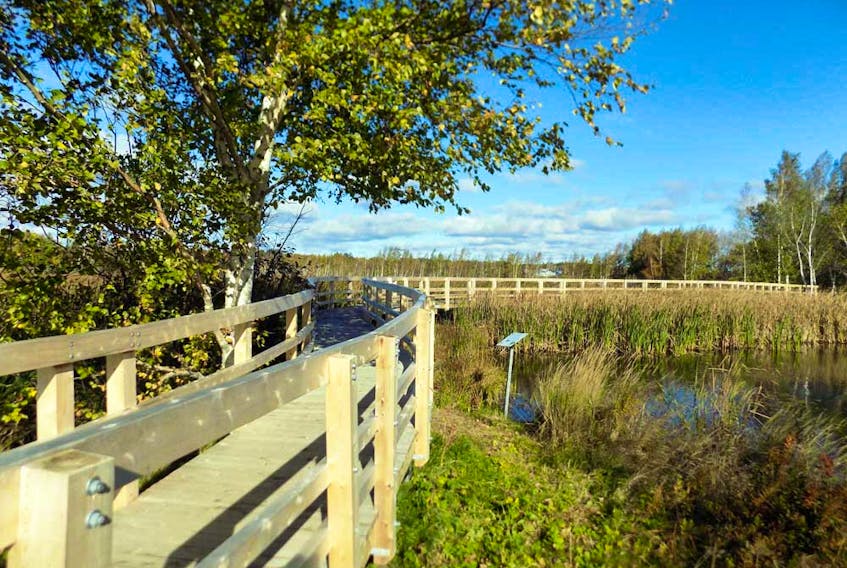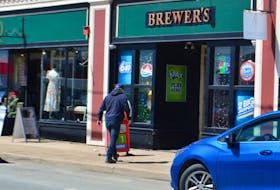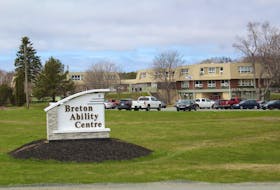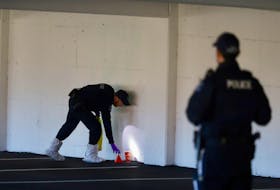SACKVILLE, N.B. – Thirty years after it was first flooded, the Sackville Waterfowl Park remains a crown jewel in the center of town.
The 55-acre park, home to an abundance of waterfowl and wildlife and featuring 3.5 kilometres of trails and boardwalks, has drawn in hundreds of thousands of visitors to Sackville since its opening and continues to attract people today from all over the world.
“The Waterfowl Park is one of the town's most important tourism assets,” says Ron Kelly Spurles, manager of tourism and business development for the town. “It comes up often in conversation when we talk to people in other places about Sackville.”
The Waterfowl Park has truly become emblematic of Sackville, he says.
“Not only does the park provide a beautiful place to walk and see the natural world, but it's also helped to shape the identity of the town,” says Kelly-Spurles, as evidenced by the names of some of the businesses around town as well as the art work and public displays inspired by it.
Its early days
But the Sackville Waterfowl Park might not have happened in the first place – had it not been for the fortitude and vision of several local residents who pushed to make sure this dream became a reality.
Sandy Burnett, Al Smith and Paul Bogaard were three of those individuals who were instrumental in making it happen, taking an idea that had been suggested to the town and, despite criticism and skepticism, they wouldn’t let the proposal die.
“We thought it was just too good of an idea to just let it get put on the shelf,” says Burnett, longtime chair of the Sackville Waterfowl Park advisory committee.
The idea was originally brought to the table in 1984 by a landscape design consultant, Jim Sackville of Basic Design Associates, who had been contracted to conduct a study of the town’s business area and come up with a downtown improvement plan.
Out of the report came the suggestion that the town adopt a waterfowl theme, placing a focus on the natural environment and finding a way to convert the unused wetlands on the edges of the downtown area into a nature-based waterfowl park.
At around the same time, Sackville resident Al Smith, who was working for Canadian Wildlife Services, began initiating conversations with Ducks Unlimited on the proposed concept.
But Burnett says there was skepticism over the idea, with some of that uncertainty being led by the mayor and several members of town council at the time.
“There were some mixed reactions on the idea,” says Burnett, noting that concern stemmed from the cost of the project and whether it would bring any real benefits to the community (and, of course, whether a wetlands would mean more mosquitoes).
Smith was not deterred, however, and decided to get other local organizations on board and hopefully gain enough support to get council to rethink their stance. He made a presentation to the Chignecto Naturalists’ Club (CNC), of which Burnett and Bogaard were members, and when they saw pictures of what this ‘waterfowl park’ could look like, they were as enthused about the project as he was.
So with the backing of the club, the three men put together their own report on Jim Sackville’s proposal, offering up arguments in favour of the concept. Called Thoughts on Sackville’s Proposed Waterfowl Park, they sent it out to town council and staff in the hopes it would earn some support.
Finally, they received a hesitant approval from Mayor Will Campbell to move forward, if they could gain the proper support and funding to make it happen. So, after forming a volunteer-driven management committee, they set out to do just that.
They gained council’s official support in early 1986 with a motion agreeing to the proposal in principle. From there, the Rod & Gun Club, the Rotary Club, Ducks Unlimited, CNC, and Environment Canada and others all jumped in to help.

The town worked on acquiring the necessary land in 1986 and 1987 – nearly half of the land was provided to the town by Mount Allison University through a lease agreement, a large chunk was purchased from Bud Doncaster, who was very cooperative in selling it to the town, and a smaller piece was bought from JW Baughan.
The formal sod-turning was held in July 1987 and Ducks Unlimited began work on the water control structures. That fall, the Sackville Waterfowl Park Advisory committee was established.
In early 1988, funding came through from the Department of Natural Resources, Environment Canada and the town for the trails and boardwalks that would be developed in the park.
The big moment came in mid-March of that same year – when the water control structures were opened and the two impoundments within the park were filled for the very first time.
Burnett says that’s why the town will celebrate in 2018, marking the 30th anniversary of the park’s actual creation – rather than when the park was officially opened in August of the following year after the trails and boardwalks were built.
Town has greatly benefited from Waterfowl Park
The Sackville Waterfowl Park was the first project of its kind in Atlantic Canada, serving as a model for environmental protection and natural habitat preservation. Since its inception 30 years ago, many other communities have followed suit and made efforts to reclaim wetlands.
“We must have got something right because it’s been replicated many times since,” says Burnett.
He says while he and his other fellow volunteers knew the park would bring these environmental and tourism benefits, he didn’t foresee the other potential opportunities awaiting the community.
“I don’t think we imagined it would be as popular with residents as it has been as a recreational venue for walkers and runners.”
Burnett says the park has also provided endless learning opportunities for local school groups as well as research experiences for university students. It has also served as a canvas for many artists, as well as a venue for many different community events.
Wallie Sears, a lifelong Sackville resident and longtime Tribune-Post reporter who has been covering the evolution of the Waterfowl Park from its beginnings, says although there was initial skepticism from both council and residents, they have come to embrace what is now considered a gem in the community.
Sears says it didn’t take long for people to realize its importance as a community resource and as a drawing card for the town.
“I have seen it grow from day one,” he says. “It’s a showplace in this community, a real landmark.”
The park, he says, has brought interest and attention from all over the world, from environmentalists, bird-lovers and eco-tourists alike, as well as everyday tourists out for a walk or to check out the amazing view.
“It’s a charming place to spend an afternoon.”
Burnett says there’s always something different to see during a walk in the Waterfowl Park, likely one of the many reasons it’s become such a popular attraction for tourists of all sorts.
Plans for expansion
Over the years, work has continued on building upon and maintaining the park. More trails and boardwalks have been added, along with benches, an observation tower, interpretive signs, and more. Staff at the Sackville visitor information centre serve as guides and offer tours of the park throughout the spring, summer and fall.
And there is more still to come, promises Burnett.
“We’re not done yet, that’s really the exciting part of it.”
This fall, an expected extension to the park, thanks to a land bequest by the late Daniel Lund, will expand the park by about 50 per cent. The approximately 22 acres of marshy and wooded land is adjacent to the park, located near the Trans Canada Trail and around the Squire Street area. Burnett says trails will be cleared throughout the site, adding to the already expansive property.
An opening and dedication of this new section to the park is anticipated to happen this fall, likely in October, says Burnett, and the event will also serve as the 30th anniversary celebrations for the park.
The town also hopes to link the southerly portion of the Waterfowl Park with the water retention ponds that are being proposed as part of the Lorne Street flood control project. This may include trails in the areas around the ponds near Lorne and St James Streets and the CN Railway tracks.
And the proposed Quarry Park could also be “another wonderful place to develop this idea of nature parks,” says Burnett.









